Southern Italian Desserts by Rosetta Costantino – A Book Review and a Giveaway
Zeppole di San Giuseppe
We have a winner!
The winner is Laney of the website Ortensia Blu!
Congratulazioni, Laney, your book is on its way!
Rosetta Costantino, food writer, cooking teacher, and native of Calabria, gathered her husband and kids, and traveled through the Italian regions of Calabria, Campania, Basilicata, Puglia and Sicily to find the classic desserts of Southern Italy, a swath of territory known as the Mezzogiorno. From cookies, to cakes, cream-filled pastries and frozen desserts, she tried them all, developed recipes and now presents them here in Southern Italian Desserts, entry number three in my Suggestions for Christmas Giving. This book will whet your appetite for holiday baking and gift giving, while awakening memories of family gatherings and long lost recipes. It’s a dream come true, a sweet tour of southern Italy, and I’m glad to say that the publisher, Ten Speed Press, has provided a copy of the book to give to one lucky reader.
The book opens with a brief history of Southern Italy and a discussion of the many different cultural influences and their contributions to the cuisine. The chapter A Southern Italian Dessert Pantry lists the tools, pans and other items necessary along with descriptions of various Italian ingredients. Like the country itself, the recipes are divided by region, presented in unique chapters.
Italy produces some of the finest nuts in the world, and the country’s pastry chefs and bakers make ample and creative use of them. Almonds, hazelnuts, pine nuts, pistachios, and walnuts are all well represented here. Incidentally, a number of the book’s desserts, including many nut-centric ones, are gluten free, and are so noted for those who must be watchful.
I started with Dolci di Noci, a specialty of the region of Basilicata. Crispy and surprisingly light, with a slightly chewy center, these cookies are packed with walnut flavor. Granulated sugar and walnuts are ground together, mixed with an egg, formed into logs, cut and baked – fast, simple, and pop-in-your-mouth delicious. Click here to go to Rosetta’s site for the recipe and step-by-step directions.
Next I looked to Puglia for a trio of cookies. Pezzetti di Cannella are bite-size diamond shaped cookies flavored with dark, fragrant cocoa and cinnamon. For a final flourish these little jewels are tossed in a bowl of powdered sugar glaze and set on a rack to dry. Put these on a Christmas cookie platter and watch them disappear.
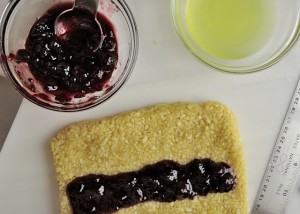

Biscotti di Ceglie are a specialty of Ceglie Messapica, one of the oldest towns in Puglia. They were new to me though, and as soon as I read the recipe, I was intrigued. Made of toasted chopped almonds flavored with honey and Limoncello, the dough is pressed into a block and a thin line of cherry preserves is spread across it. It is then rolled and cut, encasing a bite of cherry preserves in every cookie. This heirloom recipe also has a unique instruction: to prevent sticking and make assembly easy, the author recommends dampening one’s hands and work surface with Limoncello. With a hint of Limoncello, these crunchy almond and cherry cookies are a delight.
Perhaps the most unique of the Pugliese cookie triad are the Intorchiate. A fragrant butter dough enriched with olive oil and white wine is rolled into ropes, twisted, pressed into granulated sugar and dressed with blanched almonds. These beautiful cookies are delicious, slightly crisp and quite light.
A Sicilian classic, Biscotti Regina, are tiny balls of dough perfumed with orange and rolled in sesame seeds. Whether enjoyed with coffee, a bit of wine or grabbed by the kids as they zip through the kitchen, these crunchy cookies are perennial favorites.
These cookies and many others are unfussy, inexpensive, and easy to make. They are, however absolutely delightful to eat, prime examples of the genius of the Italian baker.
For a fancier goodie, try Biscotti Eureka, pastry pinwheels filled with a sweet-tart mixture of ground almonds, orange marmalade, honey and candied orange peel. The book’s detailed and specific directions make assembly simple. These are a beautiful accompaniment to a cup of tea or coffee.
If it is cakes you are after, there are plenty from which to choose. It seems that every family has a recipe for an apple cake. Rosetta’s Torta di Mele e Ricotta boasts a thick batter studded with diced apples, enriched with ricotta, and lightened with beaten egg whites. The torta is topped with sliced apples and finished with coarse sanding sugar for a jewel-like effect. Serve it warm with a small scoop of vanilla ice cream for an inviting and comforting dessert. This moist cake keeps well, and served unadorned is perfect for an afternoon snack.
Torta Caprese is here too. This moist cake from the island of Capri is made of ground almonds, dark chocolate, and a dash of Kahlua, its batter lightened with fluffy meringue. Dark and rich, yet not too sweet, this cake is a versatile dessert. Serve it with a dusting of confectioners’ sugar or dress it up a bit with a dollop of lightly sweetened whipped cream. Torta Caprese keeps well over several days. In fact, like so many nut desserts, it actually improves and can be made ahead, a plus in my book.
Sicilian classics abound here – from the island’s iconic Cannoli, to the deliciously dark Nero all’arancia, a rich gelato made with cocoa and dark chocolate. This creamy frozen treat is generously flavored with orange extract and dotted with candied orange peel. As is typical of Sicilian gelati, cornstarch, rather than egg yolks, lends body. If you thought gelato was only for the summer months, consider this one as a finish to a Christmas dinner.
Gelato Bianco Variegato al Pistacchio is a creamy rich white chocolate gelato swirled through with luxurious sweet crema di pistacchio (pistachio cream.) This is gelato at its most elegant.
Bocconotti (little mouthfuls) are found across Italy, and are especially popular during the Christmas season. Short-crust pastry is pressed into mini-brioche molds or tiny tart pans and a sweet filling is added. Sometimes these pastries sport a top crust, but they can also be left open. In the version pictured here the pastries are filled with a chocolate and almond mixture, although the book provides a variety of fillings. Click for my post and a link to the recipe. This is, by the way, my most repinned item on Pinterest. They are that good.
Sfogliatelle Frolle, half-moon shaped pastries with a satiny cream filling are one of Naples’ most famous creations. A bit of baking powder adds lift to the short-crust pastry, and the filling of sweetened ricotta, semolina and candied orange peel is scented with vanilla and cinnamon. Dusted with confectioners’ sugar and eaten warm from the oven, the light crust yields to the bite as the creamy center fills your mouth. You will swoon. And then you’ll ask for another. These pastries can be assembled ahead of time and frozen, ready to pop into the oven for breakfast or as a welcome for surprise guests.
Creamy Zabaione al Limoncello is a modern take on one of Italy’s most ethereal desserts. Egg yolks and sugar are beaten over simmering water until satiny and thick, and the mixture is often spiked with Marsala. I favor it with other, stronger liquors, and here Limoncello adds the refreshing tang of lemon. The zabaione, once cooled, is lightened with whipped cream and served over berries that have been macerated (soaked and softened) in Limoncello and sugar. I wound up (quite by accident) reversing the dessert – putting the berries on top, rather than cloaking them in the custard, and it was delicious. There’s a lesson here. Be flexible in the kitchen. Be calm in the face of errors. If something does not look perfect, or if you get the directions a little wrong, don’t fret. Sit down, laugh a little, and then enjoy the fruits of your labor. This dessert would be an exceptional cap to a New Year’s Eve meal – upside down or right side up.
I always loved baking with my grandmothers and my mom, but I was left guessing by directions like “Add enough water to make a thick paste” or “Bake in a fast oven until done.” I have always wanted answers, and Southern Italian Desserts provides them with detailed directions that take the guesswork out of dessert-making. Measurements are given in volume (cups, teaspoons, etc.) and in grams.
A section of basic recipes includes pasta frolla (sweet short-crust pastry), pan di Spagna (sponge cake), crema pasticcera (pastry cream), ricotta fresca (fresh ricotta), and many other building blocks of the Italian pastry tradition. Recipes for the staples of the Italian pantry such as nut pastes and scorze d’arance candite (candied orange peel) are here too. Sources for ingredients and tools along with a metric conversion chart and bibliography are included. The photography by Sara Remington beautifully captures the spirit of the land and its tempting desserts.
From cookies so simple a child could make them to more complex creations, there is something here for every skill level. To the beginning bakers out there – work your way through this book, and by the time you have made six or seven desserts, you’ll find your confidence has increased, and you’ll move on to the more complex offerings. Soon enough you’ll invite a few friends over to make Cartellate, ribbons of sweet dough rolled into rosettes, deep fried and drenched in sweet mosto cotto. Start a family tradition of gathering to make Napoli’s famous Sfogliatelle Ricce, layers of flaky pastry brimming with creamy ricotta and semolina filling. With friends, good cheer, and a copy of this book you will produce a buffet table covered with delightful sweets, keeping tradition alive in the process. Southern Italian Desserts will take you on a tour of some of the most beautiful spots on earth, and you’ll enjoy every bite along the way, becoming a real Italian baker in the process. Guaranteed.
Photograph by Sara Remington
Zeppole di San Giuseppe
Saint Joseph’s fried pastries
Makes about 18 zeppole
March 19 commemorates Saint Joseph’s Day, honoring the father of Jesus and celebrated throughout Italy as Father’s Day. Each region has its own dessert for the occasion, and in many parts of Southern Italy, these Neapolitan pastries topped with pastry cream and an amarena cherry are the treat of choice. The pastry is formed in a round doughnut shape, but the batter is similar to the French pâte à choux, used to make cream puffs and eclairs. The same batter is used in Palermo’s Sfince di San Giuseppe, celebrating the same holiday. There, the dough is fried in round puffs and filled with ricotta cream.
To bake rather than fry the zeppole, pipe the dough in rings on a parchment paper–lined baking sheet and bake in a preheated 400°F (204°C) oven for about 25 minutes, until golden. Fill and serve as below.
Batter
1 cup (240 ml) water
½ cup (113 g) unsalted butter
Pinch of kosher salt
1 ¾ cups (230 g) all-purpose flour
7 large eggs
Vegetable oil, for frying
Filling
1 ⅛ cups (320 g) pastry cream (recipe below), made with 2 additional egg yolks (4 total)
18 preserved amarena cherries, for garnish
To make the batter, combine the water, butter, and salt in a saucepan and bring to a boil. Turn off the heat and add the flour all at once. Turn the heat to low and cook, stirring and pressing the dough with a wooden spoon, until all of the flour is absorbed and the dough pulls away from the sides and bottom of the pan. Continue to cook and stir for 1 minute longer to cook off the raw flour taste.
Transfer the dough to the bowl of a stand mixer fitted with the paddle attachment. At low speed, add the eggs, one at a time, mixing until each egg is well incorporated before adding the next. The batter will be thick.
Heat 3 inches of oil to 350°F (177°C) in a deep pot or fryer. Fit a pastry bag with a 7/16-inch star tip, such as Ateco #825. Line a baking sheet with paper towels.
Lay out sheets of parchment paper on a flat surface and, using a 3-inch round cutter or inverted glass as a guide, draw eighteen circles on the parchment paper with a pencil, leaving about 2 inches between them. Turn over the parchment paper so that the writing can be seen through it, and pipe rings of dough onto the parchment paper, using the circles as a guide. Cut between the rings with scissors to separate each zeppole onto its own piece of parchment paper.
To fry the zeppole, carefully slip a ring on its parchment paper into the hot oil, adjusting the heat to maintain it at 350°F (177°C). Use tongs to pull the parchment paper from the oil as it separates from the zeppole; set aside to cool and discard. Drop in a second ring and again retrieve the parchment paper. Use the tongs to continually turn the zeppole as they puff and brown, about 4 minutes. Allow the oil to drip back into the pot before transferring the zeppole to the paper towel–lined baking sheet as they are done. Continue to add the rings, pull off the parchment paper, turn, and brown the zeppole until you have fried them all. Cool just until they can be easily handled.
Use the pastry bag fitted with the star tip, or a spoon, to cover the small hole in the center of each zeppole with pastry cream. (The pastry ring will puff and nearly close as it fries.) Top each with an amarena cherry and serve warm.
Crema Pasticcera
pastry cream
Makes 1 ⅛ cups | Gluten Free
When I make this rich cream using yolks from my backyard chickens, its deep yellow color transports me back to Calabria. If you have a friend who raises chickens, or know of a local farm where the chickens are pasture-raised, use their eggs for the richest color. However, this thick pastry cream is delicious no matter the eggs you use.
I grew up making this with whole milk, which is common throughout Italy. After trying it with various proportions of milk and cream, my favorite was with half-and-half, but you can make a good pastry cream with all whole milk, too. Cut the lemon peel in wide strips using a vegetable peeler, leaving behind the bitter white pith.
1 cup (240 ml) half-and-half
Peel of ½ small lemon
2 large egg yolks
6 tablespoons (75 g) granulated sugar
2 tablespoons (16 g) cornstarch
Bring the half-and-half and lemon peel to a simmer in a small saucepan; do not let it come to a full boil.
Meanwhile, in a 2- to 3-quart heavy, nonreactive saucepan, whisk the egg yolks and sugar until they are completely smooth and slightly thickened. Whisk in the cornstarch until it is completely incorporated.
Use a fork to carefully remove and discard the lemon peel from the half-and-half. Add the half-and-half to the egg mixture in a slow stream while whisking constantly. Return the mixture to medium heat and cook, whisking constantly, until the pastry cream boils. Continue to whisk as you boil the mixture for about 30 seconds to make a very thick cream—when you remove the whisk from the pan, you should have to shake or tap it firmly to drop a splotch of cream back into the pot.
Transfer the pastry cream to a bowl. To prevent a skin from forming, press a piece of plastic wrap directly onto the surface. Refrigerate until cold, about 4 hours, or up to 3 days. (To quickly chill the cream, fill a larger bowl with ice and water and set the bowl of pastry cream over it, taking care not to slosh water into the cream.)
Reprinted with permission from:
Southern Italian Desserts: Rediscovering the Sweet Traditions of Calabria, Campania, Basilicata, Puglia, and Sicily
by Rosetta Costantino with Jennie Schacht
Ten Speed Press, © 2013 (October 8, 2013)
Photo Credit, Zeppole di San Giuseppe, Rosetta Costantino: Sara Remington
Hardcover: 224 pages
ISBN-10: 1607744023
ISBN-13: 978-1607744023
Visit the author’s website at Cooking with Rosetta
Domenica Marchetti talks with Rosetta Costantino at DomenicaCooks.com
Note: You can click on any picture for a larger image, and see a slide show!
The contest is now closed.
Winner will be announced soon!
And now for the contest:
It is easy to enter – just comment below and tell me your favorite Italian dessert.
Not to worry, there is no right answer. Be sure to enter your email address so I can contact you if you win. And, remember to enter your email in the email field and not the body of the comment. Your email address will not be shown or used for any purpose other than to contact you for this #Giveaway.
The Official Fine Print:
Giveaway begins on Wednesday, November 27, 2013 9, at 5:30 pm Pacific Time, and closes on Tuesday, December 3, 2013 at 11:59 pm Pacific Time. My computer is the official timekeeper for this Giveaway. The winner will have 72 hours to respond to the winning notification email from AdriBarrCrocetti.com, otherwise a new winner will be chosen. The winner will be notified within 24 hours of the closing of the sweepstakes. Be sure to allow email from AdriBarrCrocetti.com if you use an email filter.
Immediate family members (parent, child, sibling, IRS dependent and spouse of each) of AdriBarrCrocetti.com are not eligible to participate. Entries open only for shipping addresses in the continental United States of America. This Giveaway is void where prohibited by law, and is open only to those 18 years and older. Please, only one comment per person.
This is a Giveaway through sweepstakes where the winner will be selected in a random drawing on or about December 4, 2013 from all eligible entries received during the sweepstakes period. The number of eligible entries received will determine the odds of winning.
The prize is a copy of Southern Italian Desserts by Rosetta Costantino provided by Ten Speed Press for the purposes of this Giveaway, approximate retail value of $30.00 USD.
By entering your name below you are agreeing to these rules in The Official Fine Print. You enter by leaving a comment below, and doing so gives me permission to publish your online name (avatar name, blog name, or handle) in an announcement here on AdriBarrCrocetti.com.
Since we all know there could be technical problems, let there be:
even Finer Print:
AdriBarrCrocetti.com and Ten Speed Press assume no responsibility or liability for a) any incorrect or inaccurate entry information, or for any faulty, failed, garbled or jumbled electronic data transmissions; b) any unauthorized access to, or theft, destruction or alteration of entries at any point in the operation of this sweepstakes; c) any technical malfunction, failure, error, omission, interruption, deletion. If, for any reason, the sweepstakes is not capable of running as planned then we reserve the right at our sole discretion to cancel and restart the sweepstakes.
Thank you for visiting my site and for commenting. Comments are moderated personally, so please allow a few hours for your comment to appear.
Buona fortuna!
Disclosure: I received a free copy of this book for review purposes. Ten Speed Press is providing one copy for the #Giveaway. I only recommend products or services I use personally and believe will be good for my readers. I otherwise have no affiliation with any product, manufacturer, or site mentioned in this article.




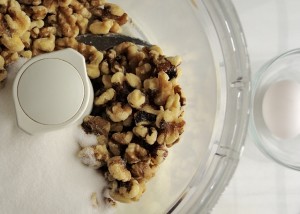
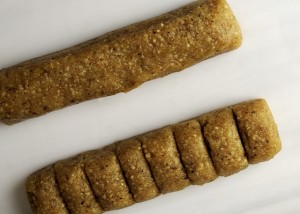
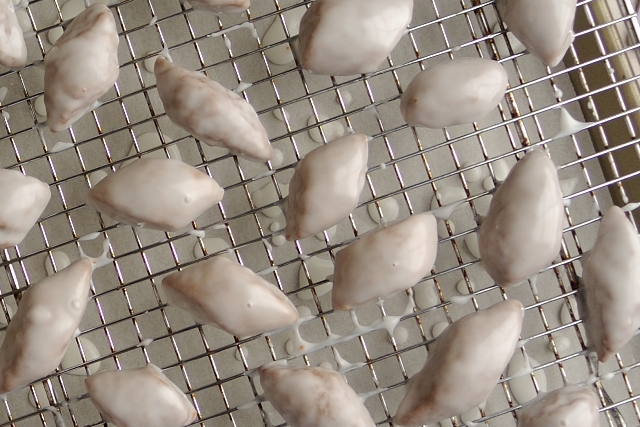



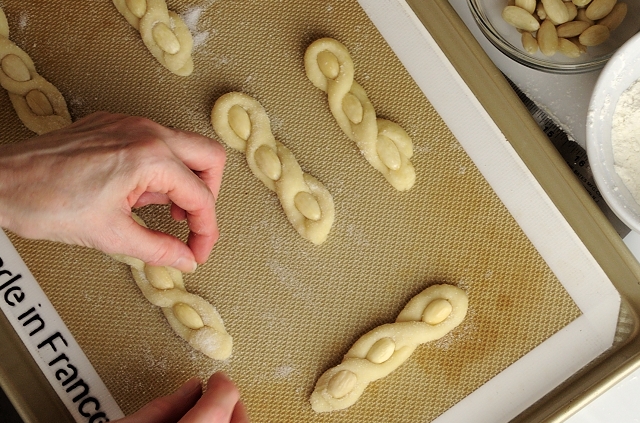
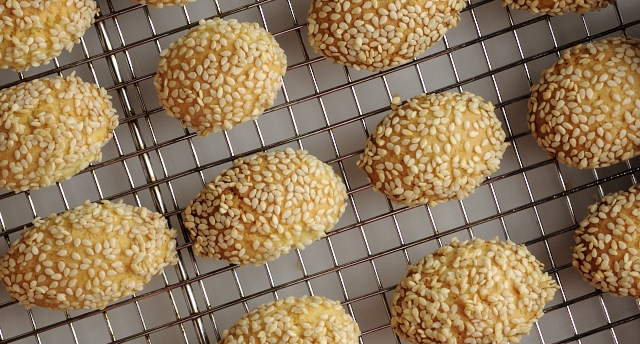
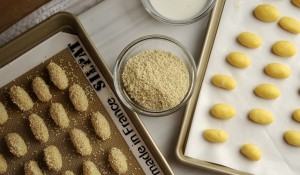
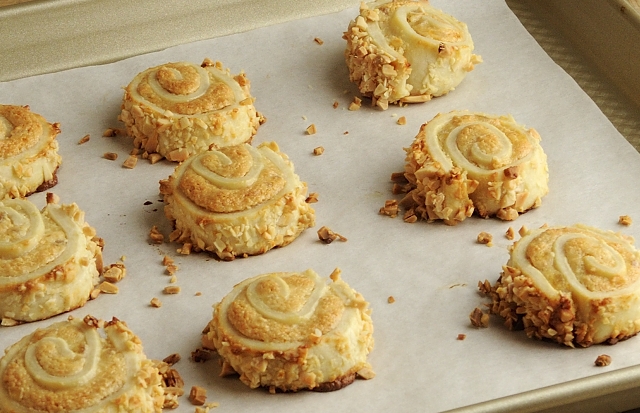
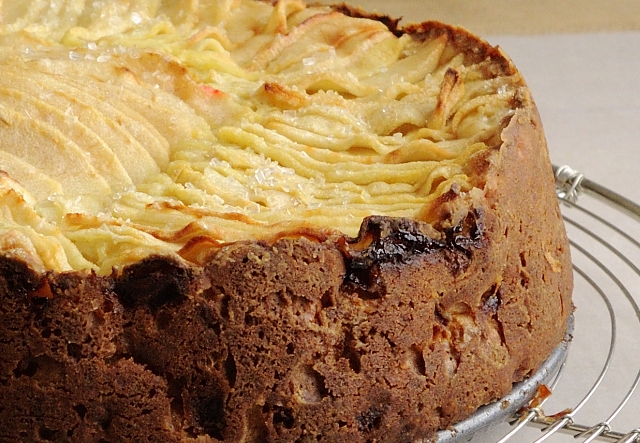
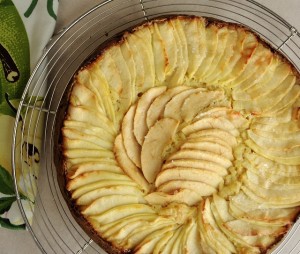
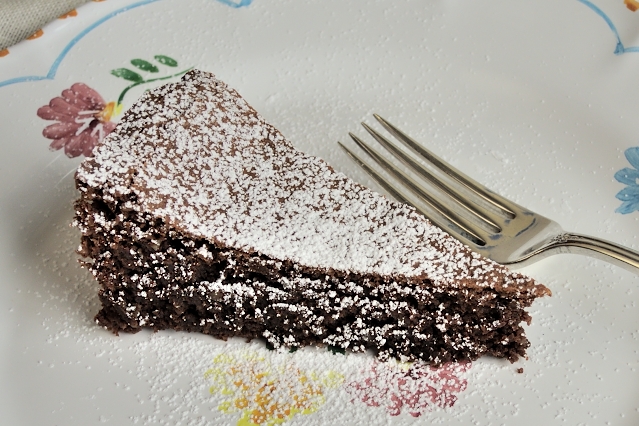

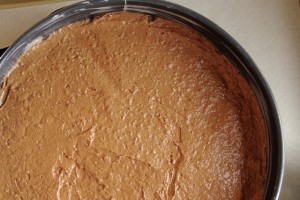
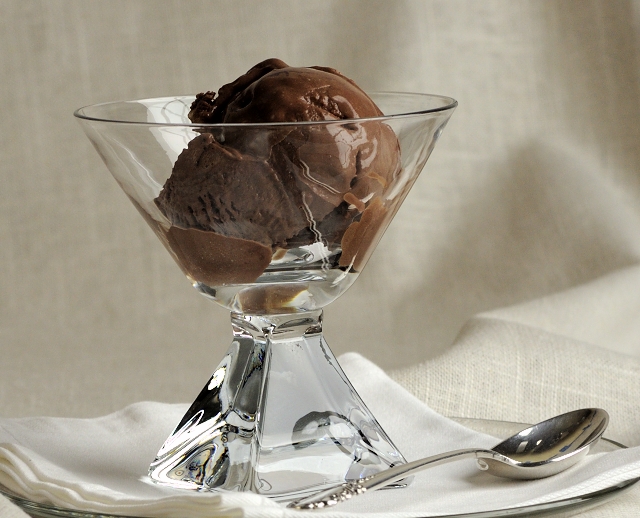
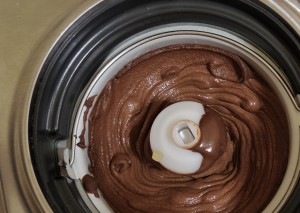
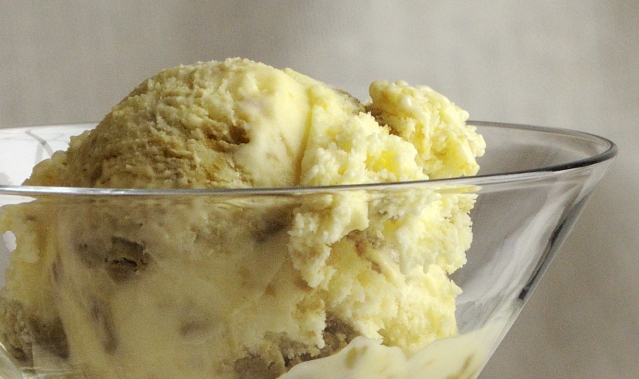
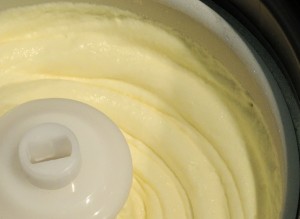
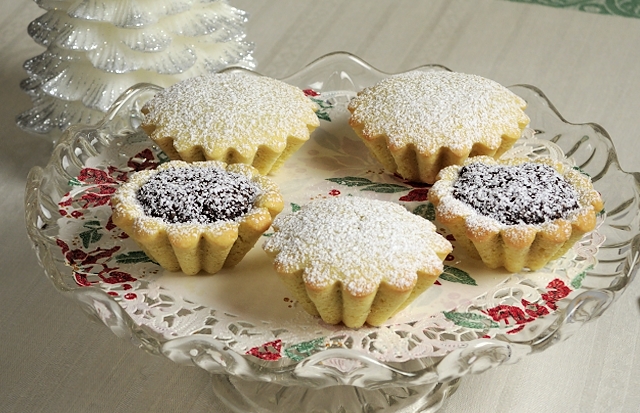

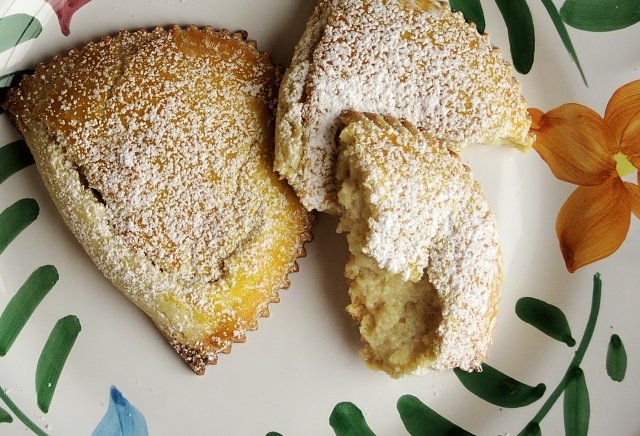
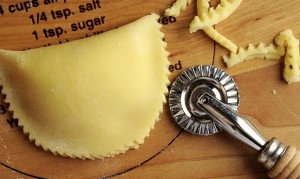

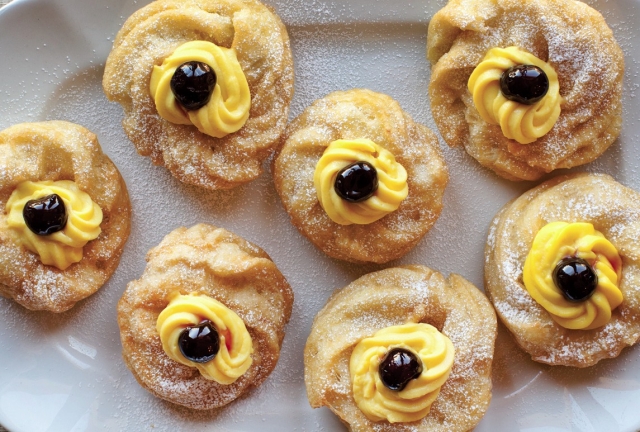



Thursday, November 28th 2013 at 7:37 pm |
OMG! I love all of your photos and am ready to lick the computer screen, but my favorite is undoubtedly cannoli! I’m 50% Sicilian but love cannoli 100%! Grazie!
Friday, November 29th 2013 at 7:53 am |
Tiramisu…is my favorite. Even though it is easy to find in the US,is not always easy to find an amazing one.
Friday, November 29th 2013 at 9:14 am |
Amazing that you made so many of the recipes, and they all look so perfect! (And, I like that there is NOT a spot on that stove of yours!) To have your endorsement, this book MUST be great! Too bad we can’t take some of her classes together…one is in my old neighborhood. I’ve not many true Italian desserts, but I do love tiramisu, crostatas and pizzelles!
Friday, November 29th 2013 at 1:35 pm |
You’re AMAZING Adri! This post is absolutely spectacular! And I don’t know what I’m more impressed by-the fabulous recipes in Rosetta’s book or your extraordinary execution of them. (And I’m continuing my eating quest to find my favorite Italian dessert…it will last forever!)
Friday, November 29th 2013 at 1:54 pm |
Grazie Laney!
Rosetta made it easy. I made so many of her recipes– I could not even include them all here. This book is a gem. Make room on your shelf!
Friday, November 29th 2013 at 3:36 pm |
Those desserts look delicious! My favorite Italian dessert is Pandoro
Friday, November 29th 2013 at 5:10 pm |
My favorite Italian dessert is Pistachio Gelato! Thank you for the fab review of Southern Italian Desserts. How could we not want our very own copy!
Friday, November 29th 2013 at 7:26 pm |
OMG what a WONDERFUL Post!! Bravo!! We love them all! First, let me say thank you for a generous giveaway and how we would LOVE a copy of Rosetta’s Southern desserts. So many to choose from its very hard to select just one favorite. But I do have three favorites, one is always the gelato nero-all’arancia, the second is the torta caprese because our parents (from Naples) lived in Capri and conceived our brothers there and third, zeppoli di San Giuseppe (a must in our home every year because my husband name is Joseph). Thank you again!
Saturday, November 30th 2013 at 3:19 am |
What a marvelous cookbook! I loved all the cookies, but especially the Intorchiate. Beautiful.
The Italian dessert I most often make is panna cotta. So many varieties are possible and everyone loves it.
Saturday, November 30th 2013 at 4:16 am |
Adri! What an absolutely STUNNING post. So thoughtful and thorough, well done! Oh, how I wish I was your neighbor throughout all of this cookie baking (your house must have smelled divine…) If I had to pick, I would say that sesame cookies are one of my favorite Italian desserts as they are a childhood favorite. I love them with coffee, morning, noon & night! Your pictures are just beautiful xx
xx
Saturday, November 30th 2013 at 8:38 am |
Oh my, I know what tops my Christmas gift list! I love the regional emphasis of the book, and the fact that the author captured authentic recipes little-known outside of their respective regions. I wonder if I could take a week off of work and bake my way through the entire book? Like usual, your photos are exquisite Adri!
Saturday, November 30th 2013 at 9:34 am |
What a phenomenal cookbook and I want to eat everything that is made here. Italian desserts can be so unique and we do not even know it. Hard to pick a favorite. Tiramisu is always good if done properly.
Saturday, November 30th 2013 at 9:48 am |
What a thorough and inspiring review! I’m sold and want a copy of the book — my husband and I love bakeries, especially Italian ones, and everything you made here looks like something we’d want. : ) I’m especially curious about the cannoli recipe since that’s my favorite.
Saturday, November 30th 2013 at 10:59 am |
Thank you for doing such a thorough review of this book! I’ve had it on my wishlist since it published, but I keep thinking, “Do I really need another baking book?” Yes. Yes, I do. My husband is in the Navy, and we live in Napoli right now. I am going to MISS sfogliatelle and cream-filled cornetti when we move back to the US. This book may be just what I need when I start to get nostalgic.
Saturday, November 30th 2013 at 12:42 pm |
WoW, that is one awesome review, awesome photo, awesome book, just awesome Adri.
Saturday, November 30th 2013 at 3:41 pm |
Hello Adri, I am in awe of your baking marathon. My teenage boys would love to be hanging out with you and take part of the QA analysis of each great Italian treat. Thank you for stopping by my website so that I could find yours. So many lovely desserts in this recipe book it would be hard to decide which one to make so making one of each is a great plan. I could not agree with you more, I love when a cooking book give exact directions and no guessing games to how much or times for baking, etc. My aunt used to always make towers of anisette cookies that are lightly dipped in a coating with sprinkles and when I was a kid growing up these were always my favourite. Looking forward to keeping in touch. Take Care, BAM
Saturday, November 30th 2013 at 7:50 pm |
My favorite, when I was living in Venice were the “Holy Cookies” – “S” shaped cookies that were slightly sweet and always served with “Vin Santo” (for dunking), a sweet, white, holy wine that wasn’t really holy at all. I wish I could remember the name but all I think I remember is that they were native to Burano, and maybe called something like “Bussoai” in Venician dialect???
Saturday, November 30th 2013 at 8:02 pm |
Follow up post – probably something like Bussole in proper Italian? I\’m just guessing though…
Saturday, November 30th 2013 at 8:08 pm |
Yes, I know that bussole means compasses but that’s what I’m remembering, can any Northern Italians help me out here? Or am I totally off-base?
Maybe because the “S” shapes where sometimes ring shaped?
Sunday, December 1st 2013 at 7:20 am |
Hi,
There are several “S” shaped cookies. “Buranelli” come from the isalnd of Burano, near Venezia, and are shaped into a slightly elongated “S” shape, a rich, eggy butter cookie. Also there are cookies called “Esse” shaped in a similar fashion. I hope this helps! Thanks for visiting. Buona domenica a te!
Sunday, December 1st 2013 at 3:48 am |
As I was scrolling down the post, every photo I saw caused me to say, “I like THIS one best,” until I got to the next photo and said the same thing. Everything looks so good!
Sunday, December 1st 2013 at 6:55 am |
WOW, just WOW. What a stunning post—all of these desserts look so appealing. When I was in Rome, I had the Sette Velli Seven Veils gelato at Mondi—most incredible over-the=top concoction ever.(with chocolate gelato, fior di latte, giandiua, nocciolo, caramel, chocolate shavings, “cereal.”)
But my other Italian favorites include zucotta, tiramisu and panna cotta. Cheers! Nancy
Sunday, December 1st 2013 at 8:05 am |
Adri, I’m not commenting to enter, but just to say Wow ~ you have been going through this book like a dose of salts! It looks like you have been having a blast. Because of time constraints I’ve had to limit myself to the pistachio cake but there are many more on my to-make list. I wanted to let your readers know, in case they are interested, that I just posted an interview with Rosetta on my blog. She came to the U.S. at age 14 and was a chemical engineer before she got into the world of cooking! I can’t wait to try some of the recipes you’ve posted, but the one I really want to set some time aside for is that Torta Gattopardo! Un abbraccio!
Sunday, December 1st 2013 at 8:43 am |
Oh my goodness! I could just list everything as my favorite…they all look amazing. The Nero all’arancia has really caught my eye as has the Zabaione. I don’t know if I have a favorite Italian dessert but I’m pretty sure these two would be fighting for that title.
Sunday, December 1st 2013 at 8:59 am |
Yummy!!!!!
Sunday, December 1st 2013 at 10:03 am |
My favorite Italian dessert is ricotta pie with candied orange peel. NICE!
Sunday, December 1st 2013 at 1:02 pm |
Cannoli are my favorite! I make them from scratch, down to the candied peel for the filling (citron when I can find it), and fill the tubes at the last minute!
Sunday, December 1st 2013 at 1:26 pm |
Wish it was open to Canadian addresses – this is a fabulous giveaway!
Sunday, December 1st 2013 at 3:46 pm |
Cookies looked delicious. Great recipes!
Sunday, December 1st 2013 at 5:04 pm |
Paglia italianna!!! Delicious
Sunday, December 1st 2013 at 5:52 pm |
Cassata!
Sunday, December 1st 2013 at 7:23 pm |
Torta de mele e ricotta